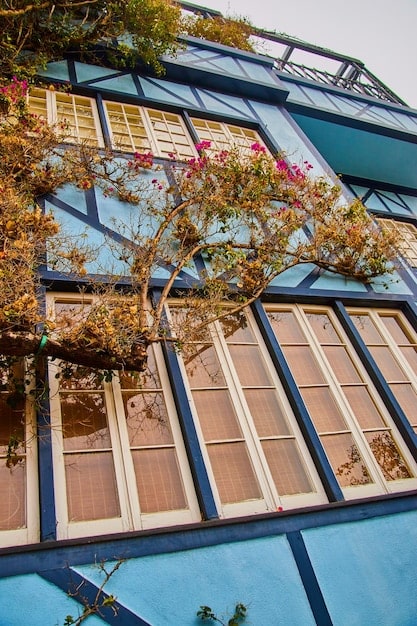Unlock Up to $3,200: Energy Efficiency Tax Credits Under the Inflation Reduction Act

The Inflation Reduction Act (IRA) has significantly boosted energy efficiency tax credits, offering homeowners up to $3,200 for improvements. This initiative aims to reduce energy consumption and promote sustainable practices through substantial financial incentives.
Discover how the Impact of the Inflation Reduction Act on Energy Efficiency Tax Credits: Claim Up to $3,200, is reshaping the landscape for homeowners aiming to upgrade their homes and save on energy costs. This guide breaks down the changes and opportunities you can leverage.
Understanding the Inflation Reduction Act and Energy Efficiency
The Inflation Reduction Act (IRA) is a landmark piece of legislation designed to address climate change, reduce healthcare costs, and lower the national debt. A key component of this act focuses on incentivizing energy efficiency through enhanced tax credits.
Key Provisions of the IRA
The IRA includes several provisions aimed at promoting energy efficiency. These provisions expand and extend existing tax credits, as well as introduce new incentives for homeowners and businesses.
- Extension of the Energy Efficient Home Improvement Credit (25C): This credit provides homeowners with incentives to make energy-efficient improvements to their homes.
- Expansion of the New Energy Efficient Home Credit (45L): This credit is for builders who construct new energy-efficient homes that meet certain standards.
- Introduction of the High-Efficiency Electric Home Rebate Program (HEEHRP): This program provides rebates to low- and moderate-income households for the purchase and installation of energy-efficient appliances.
These provisions collectively aim to make energy-efficient upgrades more accessible and affordable, driving a shift towards sustainable energy practices.
In summary, understanding the IRA’s impact on energy efficiency involves recognizing its key provisions, which enhance tax credits and introduce rebate programs.
Decoding the Energy Efficient Home Improvement Credit (25C)

The Energy Efficient Home Improvement Credit, also known as 25C, is a significant component of the IRA’s energy efficiency incentives. It offers homeowners a way to recoup some of the expenses associated with upgrading their homes to be more energy-efficient.
What Improvements Qualify?
Several types of home improvements qualify for the 25C credit. These include:
- Insulation: Upgrading insulation in attics, walls, and floors can significantly reduce energy loss.
- Energy-Efficient Windows, Doors, and Skylights: Replacing old windows and doors with energy-efficient models can improve a home’s thermal performance.
- Energy-Efficient HVAC Systems: Installing high-efficiency heating, ventilation, and air conditioning (HVAC) systems can lower energy consumption.
These improvements must meet certain energy efficiency standards to qualify for the credit.
Understanding which improvements qualify and the specific requirements for each is essential for homeowners looking to take advantage of this tax credit. Specific guidelines and certifications, such as Energy Star ratings, often dictate eligibility.
Maximizing Your Claim: How to Reach the $3,200 Limit
The IRA allows homeowners to claim up to $3,200 in energy efficiency tax credits. Understanding how to maximize your claim involves knowing the specific credit limits for different types of improvements.
Specific Credit Limits
The 25C credit has specific limits for different types of improvements. These limits are designed to incentivize a range of energy-efficient upgrades.
- Insulation: Up to $1,200 total credit.
- Exterior doors: Up to $250 per door, maximum $500.
- Windows and skylights: Up to $200 per window.
- Heat pumps, heat pump water heaters, and biomass stoves/boilers: Up to $2,000.
Knowing these limits can help you plan your upgrades strategically to maximize your tax credit.
Strategic Planning for Home Improvements
To maximize your claim, consider making a combination of improvements that align with the credit limits. For example, installing new insulation and energy-efficient windows can provide significant tax savings.
Careful planning and understanding of the credit limits can help homeowners effectively leverage the IRA to achieve the maximum possible tax credit of $3,200.
Navigating the New Energy Efficient Home Credit (45L) for Builders

The New Energy Efficient Home Credit (45L) is tailored for builders who construct new homes that meet specific energy efficiency standards. This credit aims to promote the construction of more sustainable and energy-efficient housing.
Eligibility Criteria for Builders
To qualify for the 45L credit, builders must construct new homes that meet the energy efficiency standards set by the Energy Star program or the Department of Energy’s (DOE) energy efficiency requirements.
- Energy Star Certification: Homes must be certified under the Energy Star program.
- DOE Standards: Homes must meet the DOE’s energy efficiency requirements for new construction.
Meeting these criteria ensures that the homes are built to a high standard of energy efficiency.
The 45L credit provides builders with a financial incentive to invest in energy-efficient construction practices, ultimately contributing to a more sustainable housing market.
Exploring the High-Efficiency Electric Home Rebate Program (HEEHRP)
The High-Efficiency Electric Home Rebate Program (HEEHRP) is a new initiative under the IRA that provides rebates to low- and moderate-income households for the purchase and installation of energy-efficient appliances. This program aims to make energy-efficient upgrades more accessible to those who need them most.
The HEEHRP offers substantial rebates for a variety of energy-efficient appliances. Examples include:
- Heat Pumps: Rebates for the purchase and installation of high-efficiency heat pumps.
- Electric Stoves and Ovens: Incentives for switching to electric appliances.
- Heat Pump Water Heaters: Rebates for upgrading to more efficient water heating systems.
Eligibility for the HEEHRP is based on household income. The program is designed to assist low- and moderate-income households in making energy-efficient upgrades that can significantly reduce their energy bills.
The HEEHRP represents a significant step towards ensuring that energy efficiency benefits are accessible to all, regardless of income level.
Steps to Claiming Your Energy Efficiency Tax Credits
Claiming energy efficiency tax credits requires careful documentation and understanding of the tax forms. Here are the steps you need to follow.
Documentation and Record-Keeping
Keep detailed records of all energy-efficient upgrades, including receipts, invoices, and product specification sheets. This documentation will be essential when claiming the tax credits.
Completing the Tax Forms
When filing your taxes, you will need to complete IRS Form 5695, Residential Energy Credits. This form is used to calculate and claim the energy efficiency tax credits.
- Form 5695: This form is specifically for claiming residential energy credits.
Accurately completing the tax forms and providing the necessary documentation will ensure that you receive the full tax credits you are entitled to. Consult with a tax professional if you have any questions or need assistance.
| Key Point | Brief Description |
|---|---|
| 🏠 $3,200 Limit | Homeowners can claim up to $3,200 in energy-efficient upgrades. |
| 🛠️ Qualifying Improvements | Insulation, energy-efficient windows, doors, and HVAC systems. |
| 💡 HEEHRP | Rebates for low/moderate income households for efficient appliances. |
| 🏢 45L Credit | New energy-efficient home credit for builders (Energy Star certified). |
Frequently Asked Questions
▼
The 25C credit offers homeowners incentives for making energy-efficient improvements to their homes, such as upgrading insulation or installing energy-efficient windows.
▼
To claim the credits, you’ll need to keep detailed records of your upgrades and complete IRS Form 5695 when filing your taxes.
▼
Qualifying appliances include heat pumps, electric stoves, ovens, and heat pump water heaters that meet specific energy efficiency standards.
▼
The HEEHRP is designed for low- and moderate-income households that meet specific income requirements to ensure they’re able to access rebates.
▼
The 45L credit is for builders who construct new homes meeting Energy Star standards, incentivizing sustainable building practices in residential construction.
Conclusion
The Inflation Reduction Act’s provisions on energy efficiency offer significant opportunities for homeowners and builders alike. By understanding and leveraging the tax credits and rebates available, you can not only reduce your energy consumption and costs but also contribute to a more sustainable future.





